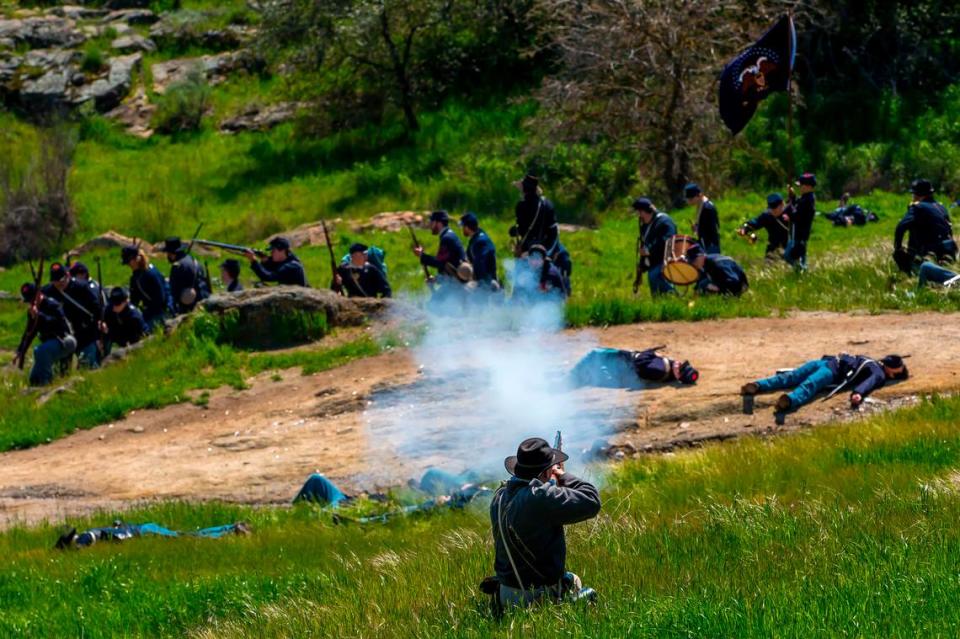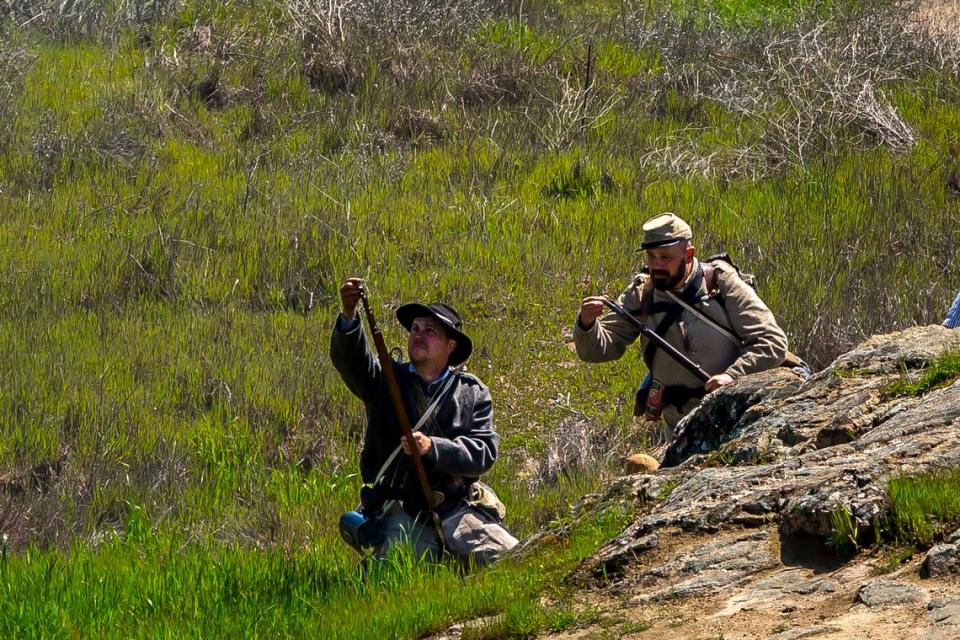Today’s uncivil warfare — on reenactment battlefield, and in our classrooms | Opinion
The first time my grandson, William, died on the battlefield came as a shock, despite the fact that it was predictable. After all, the Union Federals had been instructed by officials to “lose” to the Confederates on that scorching afternoon in Fresno seven years ago. Of the half-dozen “Living History Days” staged by the American Civil War Association every year but the last three, each side was routinely slated for victory in two of the weekend’s four battles. Now it was the Rebels’ turn to win.
Still, the sight of one’s son being felled by a make-believe ball of lead drew an audible gasp and swelling of tears to my daughter-in-law Amy’s eyes — along with a torrent of empathy for all the mothers who had lost their sons (and daughters) in that horrific war to preserve our Union.

I myself suffered an ignoble death on Kearney Park’s imaginary battlefield two years later. It was one of those rare occasions when three generations from one family were on the field at the same time, including my grandson and my son — who enacted a much-celebrated demise while sprinting gallantly, if crazedly, toward enemy lines — as well as yours truly. In my case, a volley from an advancing Confederate company knocked me down, and while I writhed in pain and screamed perhaps too dramatically from my simulated leg wound, a Rebel cavalryman galloped over, reared on his stallion 10 yards away and shot me “dead” with his Colt revolver. The handful of spectators on my side of the park loved it.
As a matter of historical fact, most Civil War deaths were not such “clean kills.” The soldiers who fell in battle were more often merely wounded, eventually bleeding to death or dying from infection or disease back at their respective field hospitals. After my own staged battlefield execution, I was required to lie motionless for the 15 minutes remaining in that afternoon’s re-enactment. Had any of the spectators seen me close up, they might’ve noticed tears trickling down the sides of my face. For I, like my daughter-in-law, was deeply moved — more so than any history textbook could convey — by the fate of the untold thousands of close family members who fell during our Civil War … and who continued to fall in all too many wars since then.
Fast forward to last weekend. My twin granddaughters and I had departed the tent-lined camp where my wife, Nancy, was helping to provide Company G of the 20th Maine with a hearty pre-battle meal. The three of us went on to spend an hour hiking along the Tuolumne River near Knights Ferry, east of Modesto, exploring grassy hills overlooking it, and generally enjoying both the sunshine and the riot of springtime purple, pink and gold now festooning the countryside. Suddenly a blast from a distant cannon announced the mustering of troops for Sunday’s final engagement. We promptly cut short our trek, rushing back alongside the barbed-wire fence near the hilltop to join an army of onlookers likewise mustering on the sloping grass expanse above a cordoned-off battlefield.
My son, Matthew, the company bugler that weekend, was dutifully sounding the call to arms. And then, to the booms and billowing smoke of opposing cannon and a lone Union mortar — the concussions of which literally reverberated inside our chests — the two armies warily approached each other. While a few Confederates skirmished from the Devil’s Den-like rocks near Knights Ferry’s famous covered bridge, others found depressions in the field from which to snipe, and still more soldiers advanced in the seemingly idiotic straight-line formations where a single volley might bring down a dozen men all at once.
Even as I watched from a safe distance — like the picnic-basket spectators who came out from Washington, D.C., to witness the unforeseen slaughter that was Bull Run — I couldn’t help thinking about the wider civil war that is now dividing the “shining light on the hill” our country presumes to be. Stoked by irresponsible politicians who are clearly ignorant of their own history, a shocking number of us imagine that somehow dividing ourselves into red and blue states is as charming an idea as North versus South. Or that banning books which expose the truth of America’s legacy of slavery and our ongoing struggles with racism and immigration is the way to preserve our nation’s “greatness.” Or that allowing citizens to own automatic rifles with 50-round clips is our God-given right, based on a reading of an amendment drafted when guns were muzzle-loaded one bullet at a time and could deliver no more than two or three rounds per minute in the hands of the most proficient Revolutionary War recruit, not to mention Civil War soldier.

Though I was able to successfully hide them from my two granddaughters while we gawked at the hour-long Knights Ferry re-enactment, I once again felt tears of remembrance seeping from my eyes: Tears for America’s sons and daughters dying on the battleground of today’s uncivil discourse; tears for our descent into competing tribes based on ever-hardening political positions and trumped-up culture war conflicts; tears for the ongoing, senseless slaughter not only on our cities’ streets, but incredibly, in our children’s classrooms.
Tears, finally, for the ruptured world we parents and grandparents will inevitably leave for future generations if we don’t teach them — by our example, and by the grace of our better angels — how to bridge our differences and come together, united once again by the promise of peace and prosperity and justice for all.
Book author Mark Haskett was the founding director of InnerFaith Resources in Modesto and a member of the Stanislaus County Interfaith Council.

